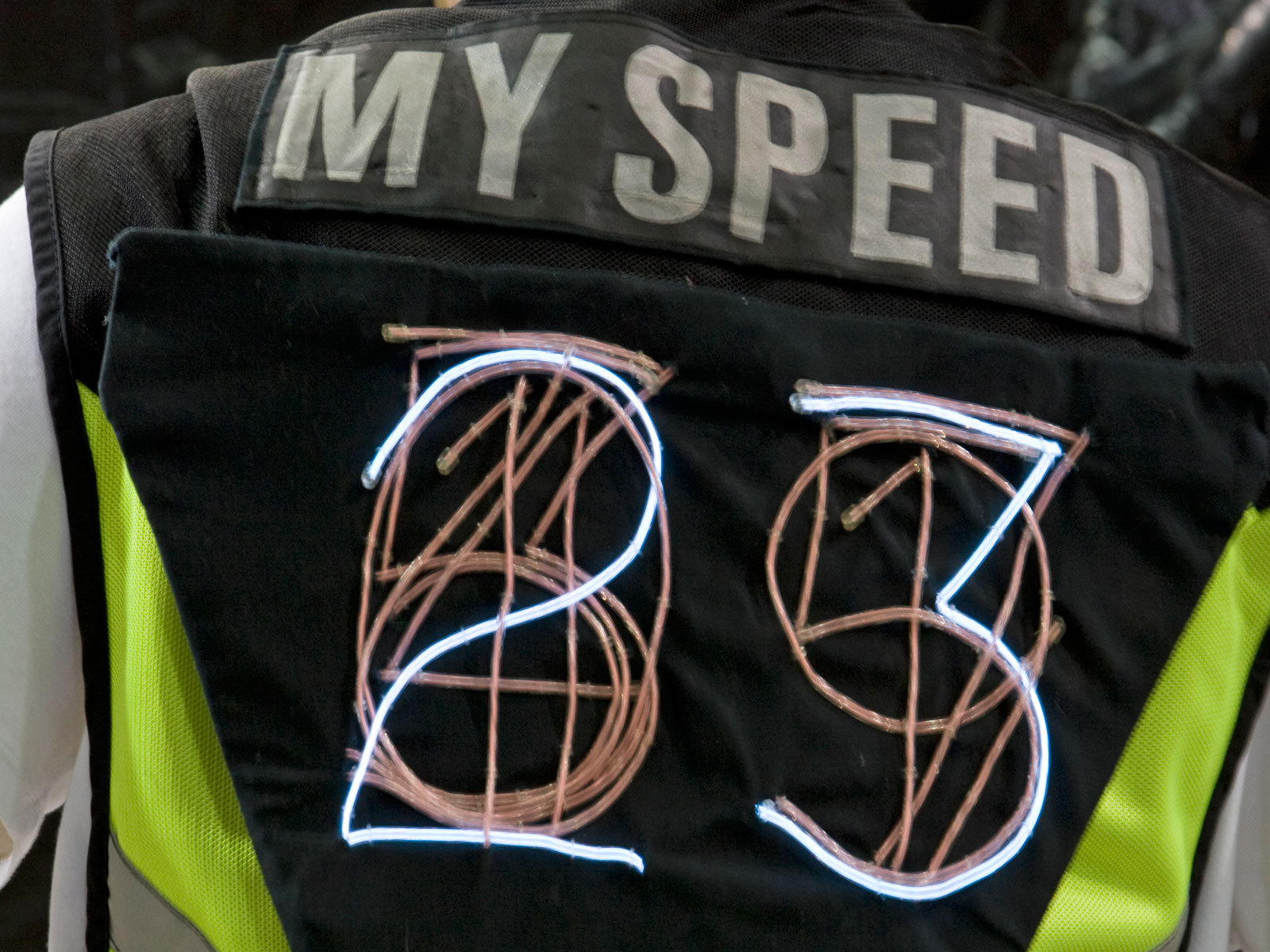This lightweight night-cycling vest displays your current speed in glowing, 7-inch-tall numbers easily visible to cars. On the back, an Arduino microcontroller reads input from an off-the-shelf bike speedometer sensor, and then switches power to sewn-in numerals made from electroluminescent (EL) wire.
Bicyclists receive a lot of honk-based grief from car drivers who perceive them as slow and in the way, and when drivers misjudge a bicycle’s speed, it can cause “right hook” collisions that kill several bicyclists each year. If car users knew how fast cyclists were moving, would they be more willing to share the road? What if a bicycle prominently displayed its speed to the cars behind it, using large, brightly lit digits?
Brady Clark, cycling advocate and design genius, asked me to help him answer this question. At first I assumed it was beyond me, since I was a software guy who barely understood electronics. But I love to learn, and the Dorkbot community in Portland, Ore., was encouraging and helpful.
Our final motivation was the Bike Gadget Contest in Minneapolis, sponsored by the Bell Museum and The Hub, a bike co-op. After some research and shopping, we completed this project in a manic three-day push, then delivered it to the contest judges within minutes of the entry deadline.


